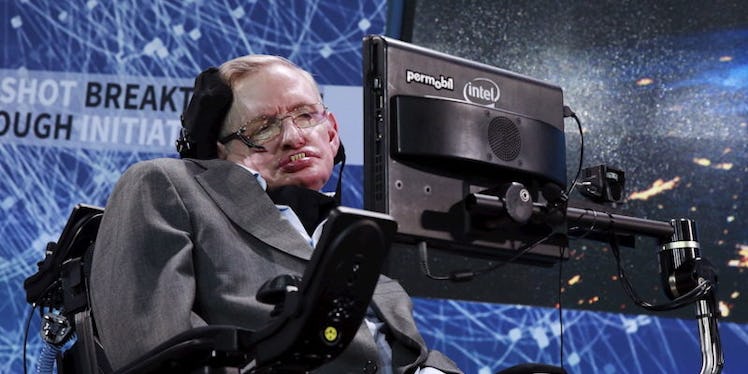
Stephen Hawking Wants To Send Robots To Stars 4.37 Light-Years Away
Stephen Hawking and a Russian billionaire announced a plan to send tiny robots to a star system 4.37 light-years away.
The project known as Breakthrough Starshot was revealed in New York on Tuesday, the 55th anniversary of Russia's Yuri Gagarin becoming the first man in space, according to The New York Times.
Hawking, Facebook founder Mark Zuckerberg and Yuri Milner, a Silicon Valley investor and former physicist named after Gagarin, are serving as the project's board of directors.
The primary goal of Breakthrough Starshot seems to be to find hospitable planets in Alpha Centauri, a star system containing two stars comparable to our sun that circle each other: Alpha Centauri A and Alpha Centauri B.
A third star, Proxima Centauri, is potentially circling the other two.
In a statement, Hawking reportedly said,
Earth is a beautiful place, but it might not last forever. Sooner or later we must look to the stars.
Milner will reportedly be investing $100 million into the project.
The majority of the money will apparently go toward a 100-billion watt laser situated on Earth. The idea is this laser would propel a thousand or so tiny probes, already brought into space by a rocket, more than 600,000 miles in just two minutes, though even at that speed it would still apparently take 20 years for the probes to reach their destination.
The probes would then scatter throughout Alpha Centauri, the star system nearest to our own, to take pictures and measurements of the surrounding objects.
Finally, the data would be beamed back to Earth in the span of approximately four years via the laser.
According to The Guardian, a great deal of confidence in the project comes from Moore's Law, which states the memory and processing power of a computer chip doubles in the span of just 18 months.
The probes would each have a mass of just 1 gram, but it is apparently possible to fit computers, cameras and electrical power inside them.
Hawking reportedly said,
Gravity pins us to the ground but I just flew to America. I lost my voice but I can still speak thanks to my voice synthesiser. How do we transcend these limits? With our minds and our machines.
Thin sails that can reflect light from the laser without absorbing energy from the beam would steer the probes.
Constructing such sails will be a daunting task, since absorbing just a fraction of the beam's energy would reportedly vaporize them.
But, perhaps the biggest hurdle for Breakthrough Starshot will be its cost, which is estimated to be between $5 billion and $10 billion.
Currently shopping for investors, the project's leaders believe it could be another 20 years before the mission is ready to begin.
Citations: A Visionary Project Aims for Alpha Centauri, a Star 4.37 Light-Years Away (The New York Times), Stephen Hawking and Yuri Milner launch $100m star voyage (The Guardian)